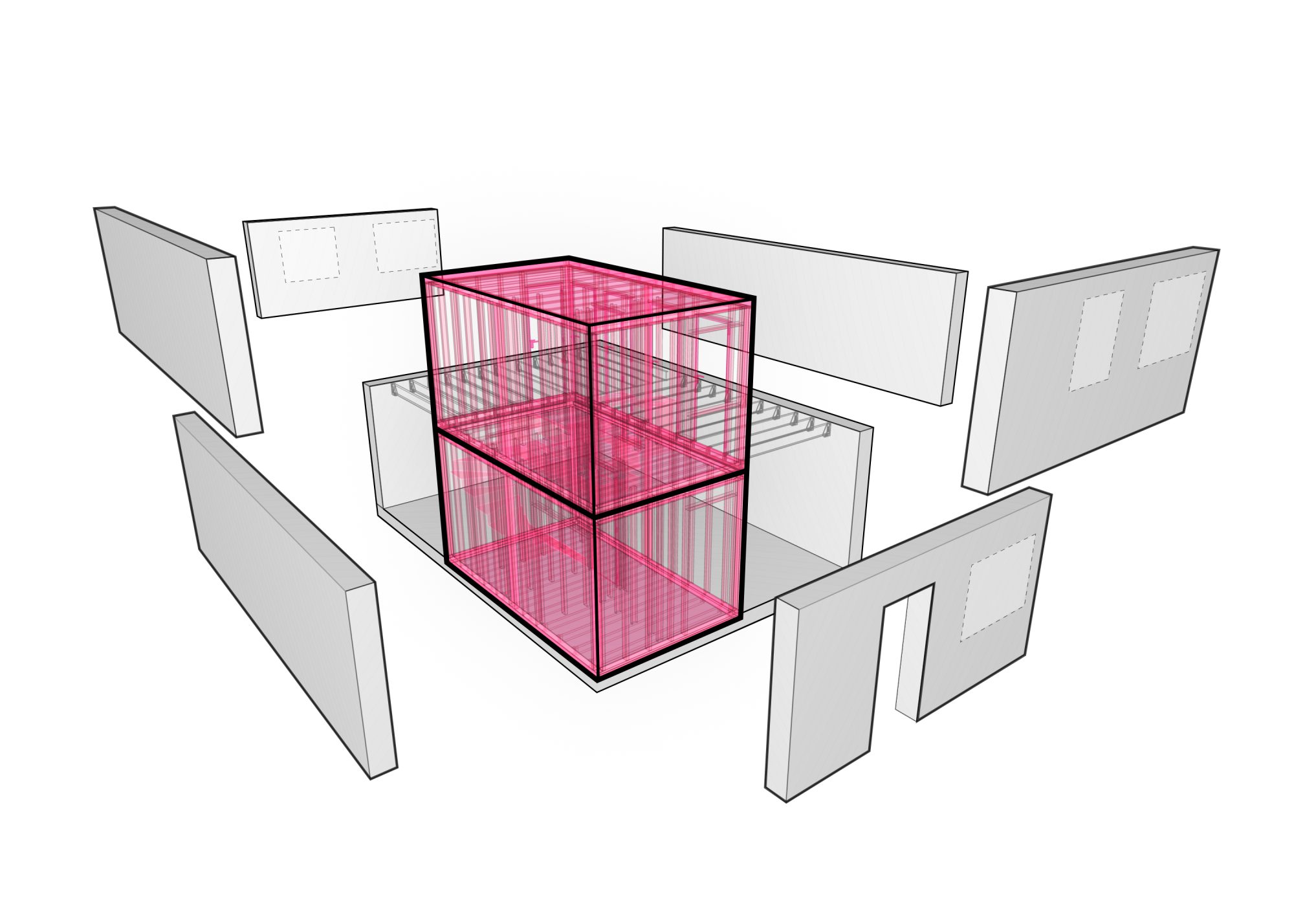In this article, Sano investigates the case for hybrid construction, which is likely to make you rethink your approach to housebuilding
In achieving good long-term quality for residents or homeowners, the construction of some parts of a house carries more risk for residential developers than others.
A realisation that these rooms can be concentrated into one value-adding offsite-manufactured product was a lightbulb moment for construction technology start-up Sano, leading to the flexible M-Dock system.
Which snags matter more in a new home?
- A crack appearing in the living room wall … or not having any hot water?
- A bedroom window latch breaking … or not being able to shut the front door?
- How about a missing weep vent versus faulty electrics?
- Or a damaged roof gutter versus a leaking toilet?
The heating, security, electrics, and plumbing have by far the bigger impact on residents and/or homeowners, are more costly to remedy, and so definitely matter more.
It’s not that the odd crack or missing weep vent aren’t important – they are – but they’re not full-on emergencies in the way a malfunctioning boiler or leaking toilet are.
The point is, not all defects are equal, and so it pays to focus on those points of failure in a house that entail the greatest impacts for the resident and, thus, the greatest liabilities for you the housebuilder.
So, on the assumption that latent and expensive liabilities are undesirable, how can you avoid them?
How to avoid defects in new homes
Quality control
As ever in the UK’s housebuilding sector, it is a question of quality control.
When building the traditional way on site, this means properly qualified tradespeople being given enough time in return for fair pay to carry out the work to the right, preferably certified, standards.
For belt-and-braces compliance and conformance, best practice is to have the work fully reviewed by a qualified inspector before it is covered up, and thereafter comprehensively commissioned.
Traditional build: compromised quality
Does this happen? Rarely. A much more common scenario is that a poorly supervised apprentice is left to do the work as quickly as possible for as little financial outlay as possible without proper inspection, and then only after the work is covered up.
Regulated work is, of course, subjected to commissioning, but to an absolute bare minimum.
Sometimes this is adequate but, as shocking downwards trends in new homebuyer satisfaction ratings show, often it is not.
Constructing new houses on site is prone to inconsistent workmanship and impacts from uncontrollable factors such as the weather, and so too often, the finished homes contain unacceptable numbers of defects.
Where these are low-impact, they are relatively easily made good. However, where they result in the failure of critical systems such as the plumbing, the homeowner isn’t the only one in hot water – the developer is too.
Offsite: part of the quality equation?
A better way to safeguard the quality of workmanship in a newbuild dwelling is to construct it in a factory.
Subject to quality standards and what’s known as ‘factory production control’ (which ensures consistency of outputs), products rolling off the production line are much more likely to hit acceptable standards of compliance and conformance.
Unfortunately, full off-site homes are not yet viable. As we’ve seen in the high-profile failures of Ilke Homes and House by Urban Splash, the construction industry has yet to successfully gear up for full off-site builds – the skills, business models and workflows aren’t there yet.
Traditional build still dominates, and for as long as that is the case, switching to full off-site construction will remain difficult.
And yet, viability is also threatened by the risks associated with building and installing critical systems onsite – especially as the industry gets used to the New Homes Ombudsman Service and the New Homes Quality Code.
In conceding that full offsite is difficult to get right, it would be a shame to throw the baby out with the bath water and abandon all of its quality-enhancing promise.
Hybrid construction solutions: offsite for high-impact risks
Is there a hybrid solution that gives the best of both worlds?
Original thinkers and construction technology entrepreneurs Sano certainly believe so.
Their analysis of failure points in new homes yielded an intriguing insight: the risks to high-impact systems in house design are associated with equipment, construction and workmanship located in just a few rooms. What’s more, these rooms tend to be adjacent to each other.
This was a lightbulb ‘what if’ moment for Sano.
What if, they asked themselves, you were to take these rooms containing critical risks offsite, the better to assure good quality and simultaneously lessen liabilities?
What if these rooms could be modularised and standardised?
What if they could easily connect to the rest of the house, which is built using the traditional methods that the industry is currently geared up for?
M-Dock system
Sano’s new M-Dock systems does just that.
It concentrates the high-impact rooms – front door, hall, stairs, toilets, building services, bathrooms – into stackable modules that sit inside the house’s thermal and structural envelope.
These then connect back to, or ‘dock’ with, the rest of the house using Sano’s proprietary connections.
The mods are manufactured and fitted in a factory, assuring the quality of the MEP systems and front door security. From there they are delivered to site as volumetric pods that can easily be swung into place on site.
In realising that some rooms are more important than others, M-Dock gives you the best of both worlds.
The quality of high-impact features in a house are properly managed by manufacturing them offsite, leaving you the freedom to design and finish the rest of the house to meet planning conditions and market needs. (Note that Sano has worked out a number of generic whole-house designs using the M-Dock system that take the headache out of designing them afresh.)
Just as important, the M-Dock concept does not overstretch suppliers’ MMC capabilities, allowing them to fall back on comfortable ways of working that are tried and tested.
Whether you’re a developer, registered provider, architect, or contractor, a hybrid approach like this could be a useful, realistic way to increase not just the pre-manufactured value of work and manage your liabilities, but also to ensure your residents or homeowners get the quality they deserve.
Sano has just finished their first test house as proof of concept in partnership with SIPco; they’d love to show you around and discuss how M-Dock could be part of your build programme.

















